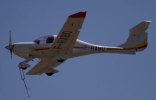AlphaMike
Line Up and Wait
It won’t take much drag to drop 10 knots. Bottom line, you have pretty much ruled out any other possibility. Fixed pitch prop running x rpm should move you at y airspeed. If you are getting the same RPMs and moving slower (no issues with the prop or pitch) you have a drag issue. Can’t really be anything else, can it?Ground adjustable prop. Pitch verified unchanged. Pitot is good (static has a leak), but verified actually flying slower via TAS VIA GPS calculator. Drag issue was the very first thing I suspected when this speed drop first occurred, but I looked underneath and couldn't find an open parachute, haha.




